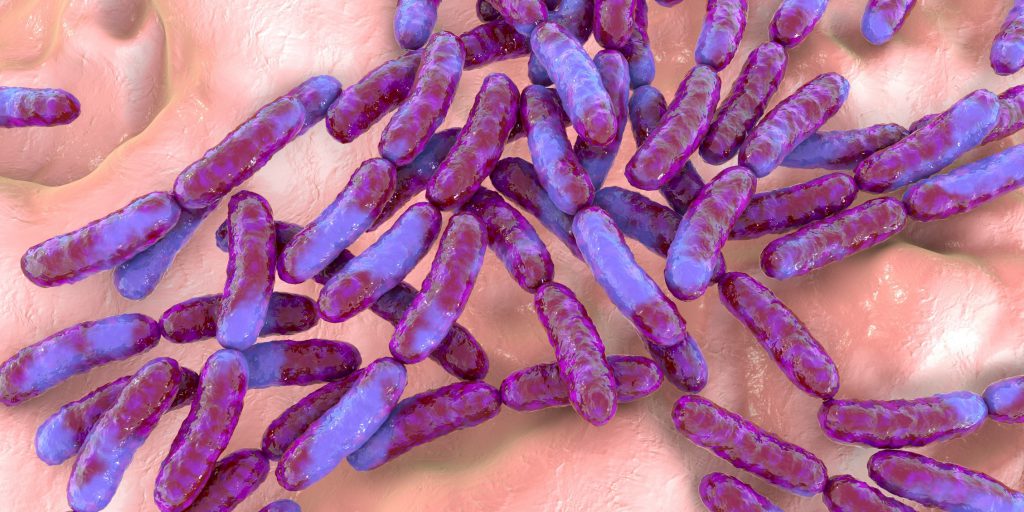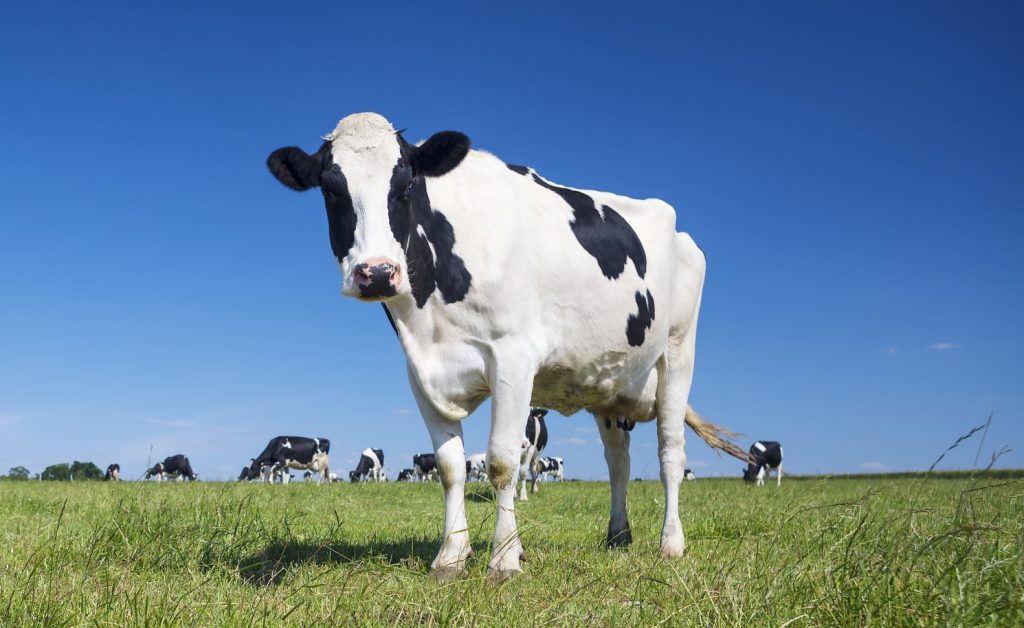Connie: Dear friends, it’s nice to have you here with us. Thank you for joining us this Saturday evening. Today, we have invited our old friend, Dr. Leonard Hofstadter, who has been an editor of scientific journals for a long time. Thank you for being here, Dr. Hofstadter.
Dr. Hofstadter: Thanks for having me, Connie. It is quite nice to see you again. Good evening, everyone. I’m very excited to be here.
Connie: In the previous program, we learned about the impact of probiotics on the incidence of animal diseases. Adding probiotics to animal feed can maintain or increase the number of beneficial microorganisms in animals while reducing the number of non-essential and pathogenic microorganisms. Probiotics improve animal health by changing the intestinal microflora in a favorable direction. Dr. Hofstadter listed for us a whole set of mechanisms of action that lead to growth inhibition and abundance reduction of pathogens in the gastrointestinal tract. Later, we discussed that short-chain fatty acids produced by various intestinal microbes have an inhibitory effect on certain pathogens, mainly by lowering the pH value outside and inside the cell. Today, we will continue to understand the impact of probiotics on animal immunity. Where would you like to start, Dr. Hofstadter.
Dr. Hofstadter: Hmm to start, I want to remind us that probiotics enhance the immune response and help fight intestinal pathogens. Speaking of the intestine, it has many functions, not only can it provide a place for nutrient absorption but it also limits pathogens and antigens. The intestine has a barrier function that regulates the binding protein complex in epithelial cells and the immune system. Some probiotics have cell walls, such as yeast cell wall complex polysaccharides, such as mannose oligosaccharides and β-glucans, and probiotic peptidoglycans. Probiotics can regulate the innate and acquired immune system through metabolites produced by the intestine, their cell wall components, and DNA.
Connie: And why can probiotics participate in regulating the immune system?
Dr. Hofstadter: Because probiotics can directly interact with the recognition receptors of intestinal epithelial cells or immune cells. The adhesion of probiotics to epithelial cells or soluble factors released from the cells can trigger a signal cascade in immune cells. They interact with cells and antibody-mediated immune systems to reduce the production of pro-inflammatory cytokines. Probiotics also protect the integrity of the epithelial barrier by minimizing apoptosis and enhancing the connection between dendritic cells and T cells, also between T cells and lymph nodes with stronger Toll-like receptor signals, and at the end of the day, we see enhanced host immunity.
Connie: I guess there must have been in vivo testings to get this conclusion?
Dr. Hofstadter: Of course. Let me give you a few examples. Adding Bacillus subtilis natto can increase the level of IgG and gamma interferon in the calf’s blood. Saccharomyces cerevisiae and its metabolites can up-regulate the expression of immune-related genes. The expression of these genes is related to the recognition of pathogen-related molecular patterns, T cell differentiation, and other molecular patterns such as CASP1. Bacillus amyloids have been shown to increase the level of interleukin-10 in the small intestine of piglets but reduce the level of tumor necrosis factor-alpha. According to reports, adding Lactobacillus Plantarum B2984 to piglet diets can enhance the serum antibody response of piglets to Salmonella typhimurium infection. Connie: I see. And in addition to mammals, did poultry-related studies reach similar conclusions?
Connie: I see. And in addition to mammals, did poultry-related studies reach similar conclusions?
Dr. Hofstadter: Adding Bacillus subtilis-based probiotics to the diet can stimulate the immune system. This would improve the antioxidant status of poultry. In addition, it is reported that Bacillus subtilis can enhance the macrophage function of broilers, that is, the production and phagocytosis of nitric oxide. And we have also seen the proven effect of yeast culture on the production performance and immune regulation of broiler chickens.
Connie: Based on observation, it has been reported that dietary probiotics can help increase the number of IgA antibody-producing cells or improve serum antibody concentration. Can you tell us why this is the case?
Dr. Hofstadter: These improvements can be attributed to the immunomodulatory activity of probiotics by stimulating intestinal-related immunity. The natural immune system of the intestinal mucosa produces antimicrobial peptides, such as β-defensins. When microorganisms enter the intestinal epithelium or mucus layer by destroying the permeability of the cell membrane, leading to cell lysis, these antimicrobial peptides can kill various intestinal pathogens. They can also enhance antibody-mediated or cell-mediated immune responses. For example, different cytokines are expressed in T cells.
Connie: This is interesting, but isn’t that the effect of probiotics on immunity does not seem to be generalized?
Dr. Hofstadter: That’s right. Because according to some studies, probiotic supplements do not affect the immune response. This may be due to the lack of immunoregulatory factors in the probiotic strains.
Connie: Make sense. In addition to improving immunity, I heard that probiotics can also improve rumen function. In what ways can this be achieved?
Dr. Hofstadter: Yeah, there are two ways, one is the influence of probiotics on the pH and microorganisms in the rumen, and the other is the influence of the biogas production in the rumen. And let me be more specific here. The rumen represents a large anaerobic fermentation tank with various microbial communities. In addition to archaea and other microorganisms, these microbial groups are mainly bacteria, protozoa, and fungi.
Connie: How are these various microbial communities responsible for the rumen?
Dr. Hofstadter: They can convert more than 0.8 percent of the total digestion of complex feed carbohydrates into volatile fatty acids that produce energy.
Connie: I see, but why are people so concerned about the health of the rumen?
Dr. Hofstadter: Because rumen microbial digestion is critical to the productivity of ruminants. so the healthy function of the rumen has to be ensured. However, recent genetic advances in high milk production require large amounts of grains to feed dairy cows. These cows will cause acidosis or subacute rumen acidosis due to the pH of the rumen falling from 6.7 to 5.5, and even further reduction of lactic acid.
Connie: Can you list some of the consequences of subacute rumen acidosis?
Dr. Hofstadter: It not only harms rumen microbial function but also causes milk fat suppression, rumen epithelial barrier destruction, lamina inflammation, environmental mastitis, and reproduction. This leads to major economic losses in the dairy industry, which has far-reaching consequences.
Connie: Wow, guess we can never underestimate the big consequence of small things. It has been reported that the positive effect of yeast in improving ruminant pH and fermentation in ruminants has been confirmed. Why can yeast improve the acidic environment in the rumen? What is the mechanism?
Dr. Hofstadter: Probiotics that produce lactic acid can promote the growth of lactic acid-utilizing bacteria, thereby accelerating lactic acid metabolism. In other words, lactic acid is converted into sugar-producing volatile fatty acids propionic acid through the acrylate and succinic acid pathways. Saccharomyces cerevisiae living cells provide certain essential micronutrient growth factors for lactic acid users and fiber digesters. And it is well known that yeast outperforms Streptococcus Bovis in the utilization of soluble sugar such as glucose. In this way, yeast can adjust the rumen pH, which limits the use of sugar by lactic acid producers. Also, yeast can reduce the redox potential in the rumen by removing trace oxygen that enters the rumen during feed intake and chewing, thereby helping to strengthen the anaerobic environment.
Connie: What is the significance of enhancing the anaerobic environment in the rumen?
Dr. Hofstadter: To provide more favorable conditions for strict anaerobic rumen bacteria such as fibrobacteria, rumen cocci, and Vibrio typhimurium to multiply and attach to feed pellets.
Connie: I see. There are many ways to regulate rumen pH.
Dr. Hofstadter: Yeah, and that’s not it. Yeast can also stabilize the pH of the rumen by stimulating the growth of proteomorphs within the rumen, thereby promoting the phagocytosis of starch granules. Immediately afterward, the production of lactic acid is minimized while consuming lactic acid. Yeast outperforms Streptococcus bovis in the absorption of glucose by protozoa.
Connie: The strains of probiotics also have different effects on the rumen fermentation mode of cattle. But the effects of probiotics in the rumen must have something in common?
Dr. Hofstadter: That’s right. In fact, in the case of rumen acidosis, probiotics have been shown to reduce the accumulation of lactic acid. At the same time, probiotics use sodium bicarbonate to buffer excess acid. Overall, we can be sure that probiotics have played a positive role in improving rumen health in the diet challenge of pH fluctuations caused by grains.
Connie: This is exciting. You mentioned earlier that probiotics can improve rumen function by affecting the production of biogas in the rumen. Remind us what biogas is?
Dr. Hofstadter: So ruminants possess a complex rumen microbial community that enables the host to digest plant feed through microbial-mediated fermentation. However, the rumen microbiota is also responsible for the production of greenhouse gas, methane. We have seen data that methane produced by ruminants accounts for 18 percent of total human emissions. Methane is a powerful greenhouse gas and is part of the normal digestion of fermented feed in the rumen. Depending on the feed, this means a large loss of energy intake of up to 15 percent.
Connie: Fascinating. Do you mean that both the production and release of methane need to be reduced?
Dr. Hofstadter: Absolutely. It’s an ongoing discussion right now. Reducing part of the intestinal methane is useful for ruminants. Because it saves energy that could be used for production purposes, it supports cleaner and environmentally friendly ruminant production. And several dietary strategies have been proposed to reduce the production of methane in the intestinal tract of ruminants.
Connie: What role can probiotics play in reducing methane production in ruminants?
Dr. Hofstadter: The growth of lactic acid-utilizing bacteria, such as Megabacterium, Propionibacterium, and Selenomonas, leads to a decrease in the molar ratio of methane in the rumen. In addition, in various studies involving Saccharomyces cerevisiae, it has been noted that methane is reduced by 6 to 20 percent in vitro and 3 to 7 percent in vivo.
Connie: Probiotics are just amazing. As one of the common probiotics, do lactic acid bacteria play an important role in reducing biogas production?
Dr. Hofstadter: It’s not very clear at this moment. A recent review concluded from a small number of in vitro studies that lactic acid bacteria can effectively reduce in vitro methane production. It depends on the strain. But without strong animal studies, the effectiveness of lactic acid bacteria in reducing methane production in the body is not too convincing.
Connie: What are the mechanisms by which probiotics reduce methane production in ruminants?
Dr. Hofstadter: Through a variety of mechanisms. Probiotics change rumen fermentation, such as stimulating lactic acid utilization, thereby increasing the production of propionic acid, reducing methane production; And also, probiotics directly inhibit rumen methanogens through bacteriocins; The next mechanism is that probiotics inhibit Specific rumen bacteria. These bacteria produce methyl compounds needed for hydrogen or methane production. Certain types of bacteriocins produced by probiotics have been shown to have a direct inhibitory effect on methanogens in vitro. So it’s possible to explore probiotics as an ecological tool to reduce methane emissions from ruminants.
Connie: That makes sense. In summary, among the several probiotics studied, yeast is the most widely studied, followed by the application of bacterial probiotics in ruminant nutrition. Traditional methods of reducing methane production in ruminants have been proven successful, but the effects are limited and often temporary. A better understanding of host-microbe interactions has led to the development of new mitigation strategies. That’s it for our discussions today. I hope you enjoyed today’s episode. Thanks, Dr. Hofstadter, for a great discussion. And thanks everyone. We will see you at the same time next Saturday.
Dr. Hofstadter: Thanks, everyone. See you next time.
